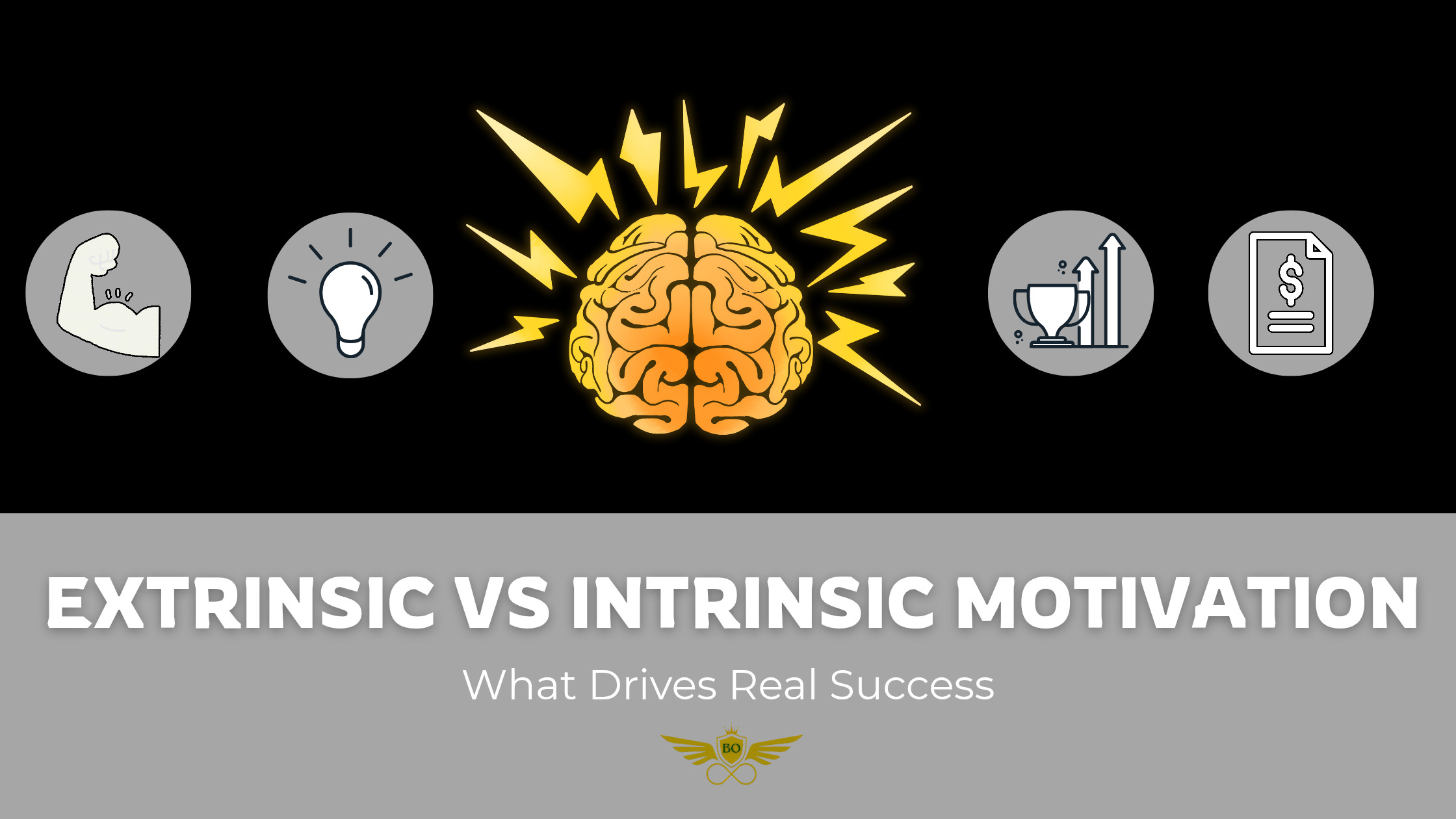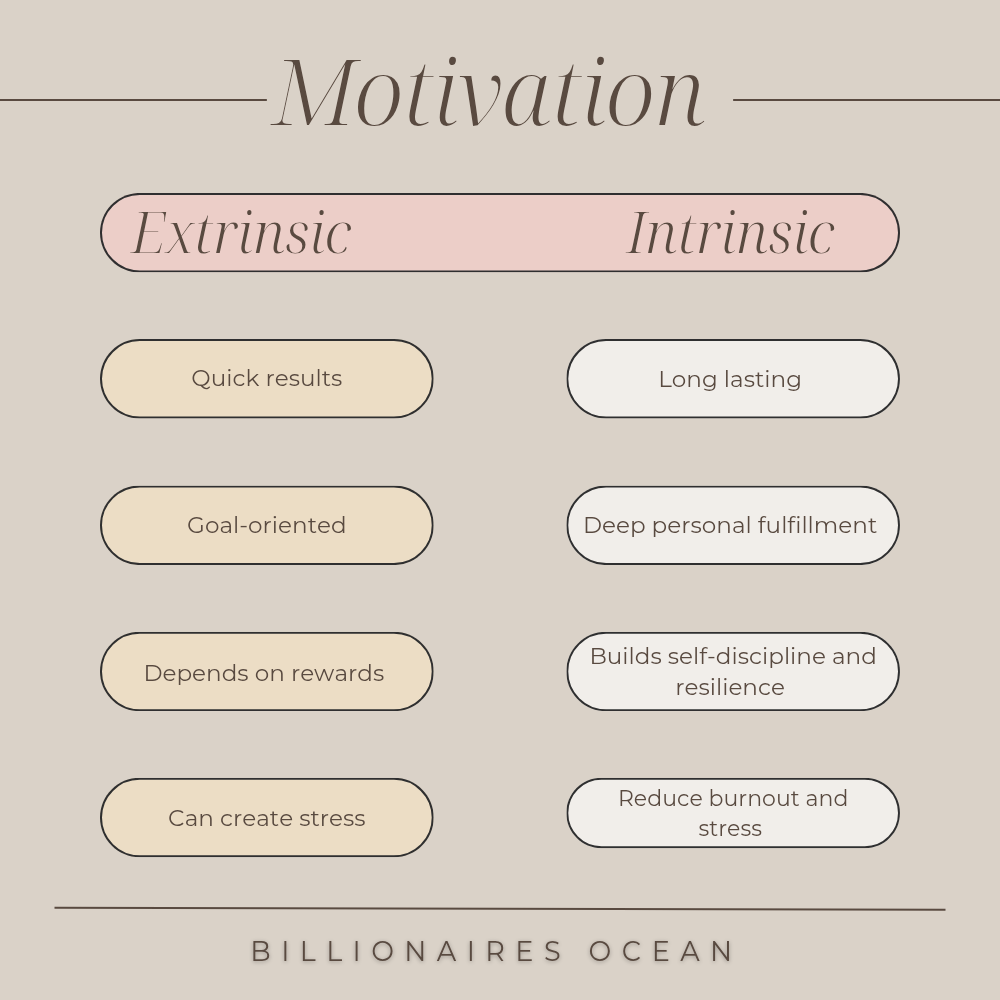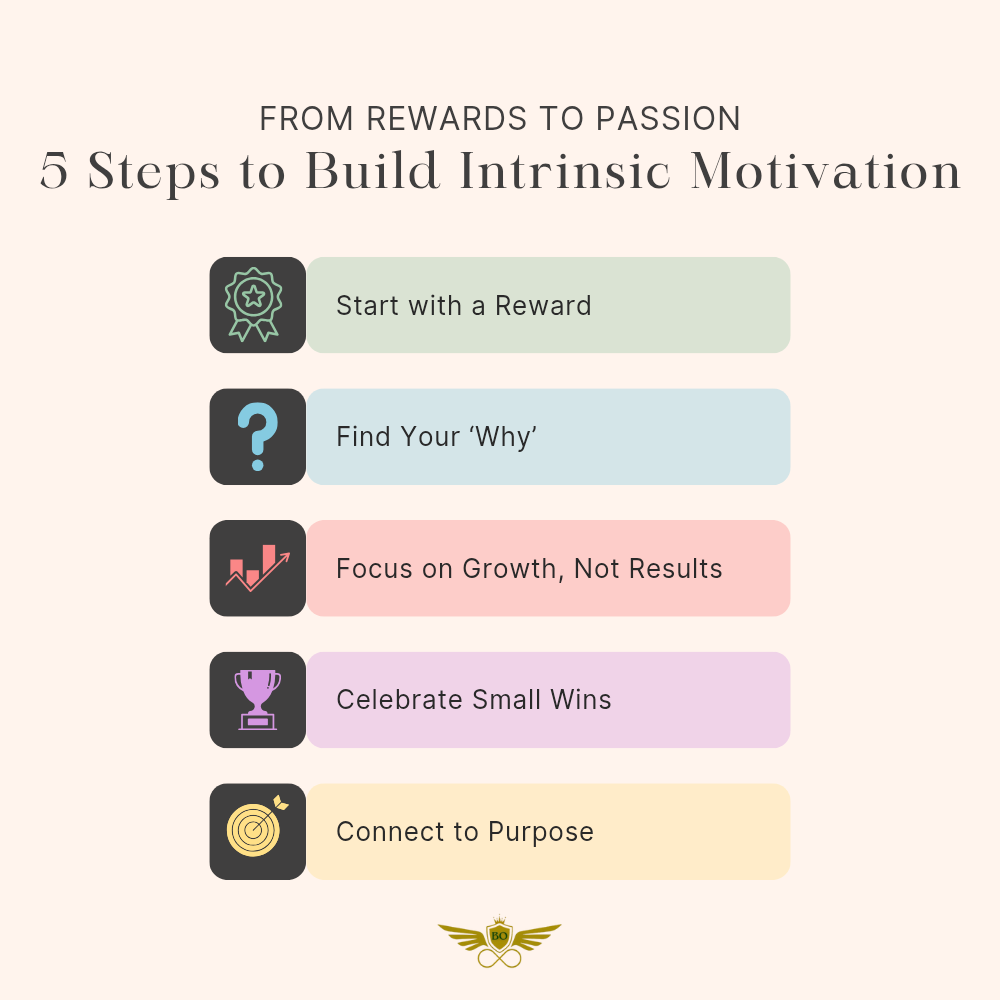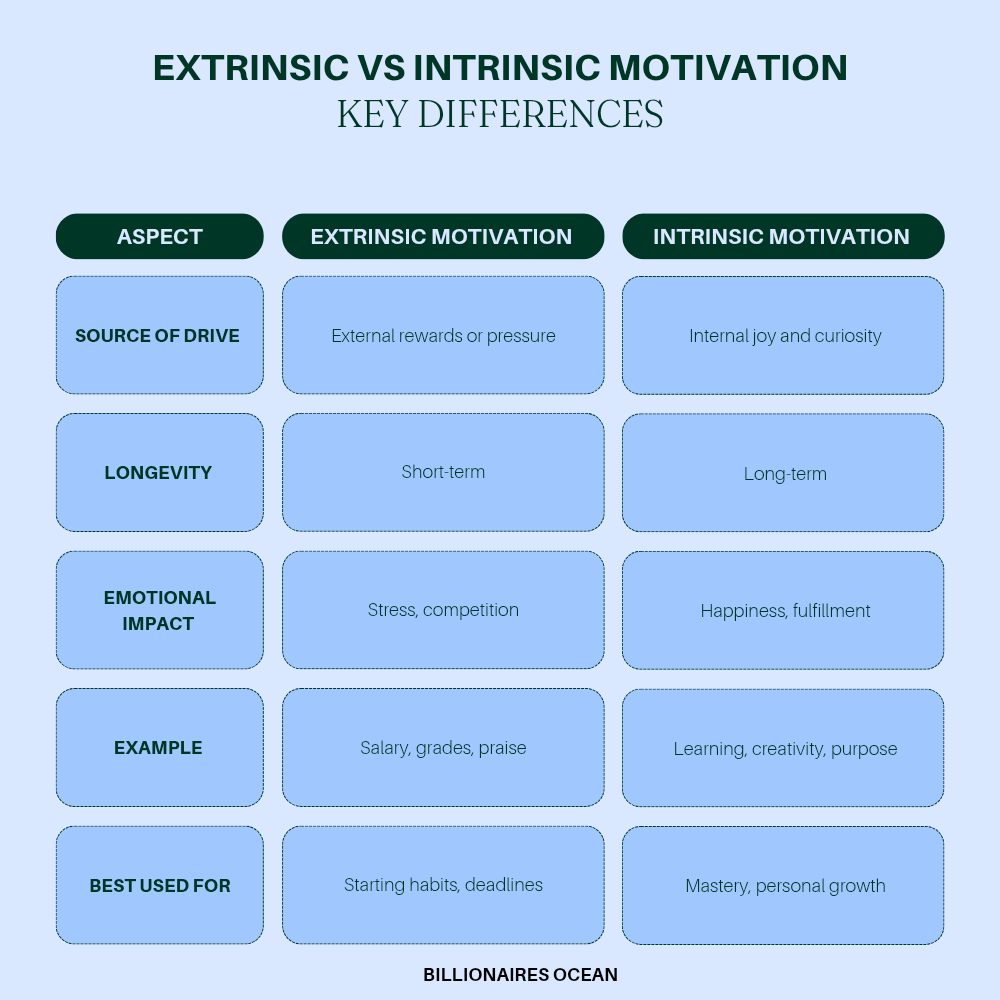
let’s learn Extrinsic vs Intrinsic Motivation ,what’s the difference
Topic included in this Extrinsic vs Intrinsic Motivation guide are:
- Introduction: What Drives Real Success
- What Is Extrinsic Motivation? (External Rewards That Push You Forward)
- What Is Intrinsic Motivation? (The Inner Fire That Never Dies)
- Extrinsic vs Intrinsic Motivation: Key Differences Explained
- How to Balance Extrinsic and Intrinsic Motivation for Real Success
- Real-Life Example: How Elon Musk and Steve Jobs Used Both
- The Psychology Behind Motivation
- Why Intrinsic Motivation Matters More in the Long Run
- FAQS related to Extrinsic vs Intrinsic Motivation
- Final Thoughts: Motivation Is the Engine of Achievement
🌊 Introduction: What Drives Real Success?
Why do some people stay motivated no matter what, whereas others give up as soon as things become difficult? The answer is found in the power of motivation – specifically, understanding extrinsic versus intrinsic motivation.
Extrinsic motivation motivates you with outward incentives, and intrinsic motivation pushes you forward with inner enthusiasm. But here’s the secret: those who learn to blend the two don’t just seek success; they create it.
Read more: 5 Micro Habits (That Make Ordinary People Billionaires)

💰 What Is Extrinsic Motivation? (External Rewards That Push You Forward)
Extrinsic motivation happens when you perform something because you anticipate a reward, acknowledgment, or outcome. It’s about getting a result rather than enjoying the process.
✅ Examples:
- Working extra hours for a bonus
- Studying tirelessly to achieve high marks
- Dieting to look good for an event
- Posting on social media to gain likes and compliments.
Extrinsic motivation can be effective since it helps you develop discipline, set deadlines, and take action. However, the issue emerges when the benefits cease flowing. Without an internal motivation, the desire diminishes rapidly.
🧭 Pros of Extrinsic Motivation:
- Improves short-term focus
- Improves performance and competition
- Suitable for new habits or difficult tasks
⚠️ Cons of Extrinsic Motivation:
- Dependence on rewards can lead to burnout.
- Reduces creativity and long-term happiness.
🔥 What Is Intrinsic Motivation? (The Inner Fire That Never Dies)

Doing something because it makes you happy, meaningful, or satisfied rather than because someone is observing or rewarding you is known as intrinsic motivation.
✅ Examples:
- Reading because you enjoy learning;
- Working out because it gives you strength; Making art as a form of self-expression;
- Offering a helping hand to others out of pure kindness.
The motivation of those who are innately motivated comes from inside; they don’t require reinforcement or incentives. Even in the absence of praise, they remain dependable, curious, and resilient.
🧭 Pros of intrinsic motivation include:
- Increasing creativity and satisfaction;
- Increasing self-worth and emotional resilience;
- Being long-lasting and self-sustaining.
⚠️ Cons of Intrinsic Motivation:
- It might be difficult to discover for unpleasant jobs;
- It can lessen urgency in the absence of other objectives.
Read more: How to Build an Unstoppable Growth Mindset (2025)
⚖️ Extrinsic vs Intrinsic Motivation: Key Differences Explained

Both are important — the key is to know when and how to use them together.
🚀 How to Balance Extrinsic and Intrinsic Motivation for Real Success
Both are necessary for real growth. Here’s how to get them to work together:
1. Extrinsic motivation should come first.
Start with responsibility or rewards. For example, give yourself a treat when you finish your daily workout.
2. Shift to Internal Motivation
As you advance, concentrate on the sensation and advantages. Exercise, for example, not only to reduce weight but also because it gives you energy.
3. Create Purpose-Based Objectives
“Why is this goal important to me?” Intrinsic motivation definitely increases when your “why” aligns with your ideals.
4. Monitor Development, Not Just Outcomes
Respect significant achievements. Every deed feeds your inner satisfaction.
5. Give Every Action Meaning
When connected to a larger goal, such as mastery, progress, or contribution, even simple tasks can become rewarding.
💪 Real-Life Example: How Elon Musk and Steve Jobs Used Both
- Elon Musk is driven by curiosity and problem-solving, as well as extrinsic motivation to establish billion-dollar firms.
- Steve Jobs was known for his intrinsic motivation, but he also valued outcomes and accolades (extrinsic). The world’s most successful people do not pick between the two; they strategically combine both.
🧠 The Psychology Behind Motivation
Humans have 3 fundamental psychological needs, according to psychologists Edward Deci and Richard Ryan’s Self-Determination Theory (SDT):
- Autonomy: the need to take charge of our behavior;
- Competence: the drive to develop new abilities;
- Relatedness: the need to establish connections with other people
While extrinsic motivation can assist in temporarily meeting these needs, intrinsic motivation naturally satisfies them. You may attain both success and happiness when you are in balance.
🌈 Why Intrinsic Motivation Matters More in the Long Run
While external motivation may win the race, inner motivation enables you to enjoy the ride. It’s the distinction between following money and providing worth, working for praise and working for a reason. Intrinsic motivation transforms ordinary individuals into passionate creators, problem solvers, and innovators.
Read more: How to Rewire Your Brain for Success in 30 Days
❓️FAQS related to Extrinsic vs Intrinsic Motivation
What is the difference between intrinsic and extrinsic motivation?
Intrinsic motivation comes from within — you do something because it’s enjoyable or fulfilling.Extrinsic motivation comes from outside — you do something to earn a reward or avoid punishment.
What is an example of extrinsic motivation?
An example of extrinsic motivation is studying hard to get good grades or working overtime to earn a bonus — you’re driven by an external reward.
What are the 4 C’s of intrinsic motivation?
The 4 C’s of intrinsic motivation are:
1. Curiosity – wanting to learn and explore.
2. Challenge – enjoying tasks that test your skills.
3. Control – feeling ownership over your actions.
4. Completion – satisfaction from finishing something meaningful.
What is intrinsic motivation?
Intrinsic motivation is when you do something because you enjoy it or find it meaningful, not for rewards or recognition — the motivation comes from within.
What are the two main types of motivation?
The two main types of motivation are intrinsic (driven by internal satisfaction) and extrinsic (driven by external rewards or pressures).
💬 Final Thoughts: Motivation Is the Engine of Achievement
Getting rewards is only one aspect of success; another is finding fulfillment. You may take charge of your energy, routines, and focus once you understand the differences between intrinsic and extrinsic drive. To get started, use incentives from outside sources, but let your inner drive keep you going. Which is more motivating for you, the passion or the reward?
💬 Leave a comment below with your opinions! If this blog was helpful to you, please tell your friends about it if they need some motivation. Remember to join for further daily ideas on success, mentality, and personal development. 🙏 Keep pursuing purpose rather than pressure, and thank you for reading!
Also visit our other platform like instagram and youtube to stay tuned..🩵🩵
